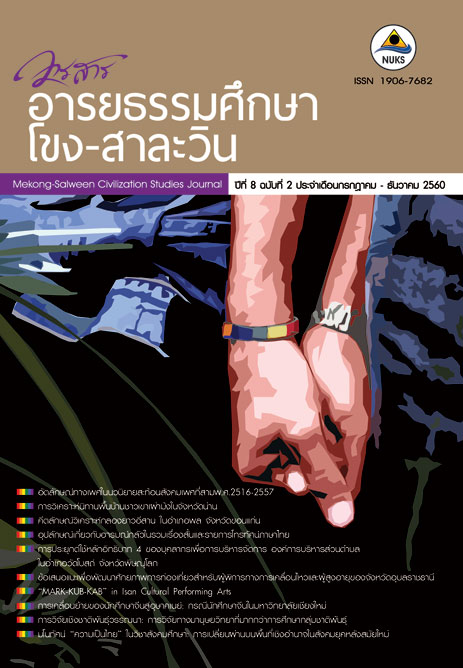“MARK-KUB-KAB” in Isan Cultural Performing Arts
Main Article Content
Abstract
Abstract
This study was conducted by means of the qualitative research methodology and ethnomusicology with the aims to 1) investigate the history
of Mark-Kub-Kab, and 2) explore the roles of Mark-Kub-Kab in Isan cultural performing arts. The findings revealed the following:
1) “Mark-Kub-Kab” is a percussion instrument made of hardwood and featured in 2 varieties: short and long. Its history has not been evidently documented. The performance has no fixed pattern, depending more on occasions and the performers’ wits and improvisation. Mark-Kub-Kab is played in traditional local festivals and has been integrated into Isan cultural performing arts such as Mor Lam Klon, Nang Pramothai (Isan shadow play), Mor Lam Plern, and Pong Lang bands.
2) Mark-Kub-Kab features in 5 types of performances: 1) Local performances, 2) Mor Lam Klon performances, 3) Nang Pramothai performances, 4) Lam Plern performances, and 5) Pong Lang performances.


